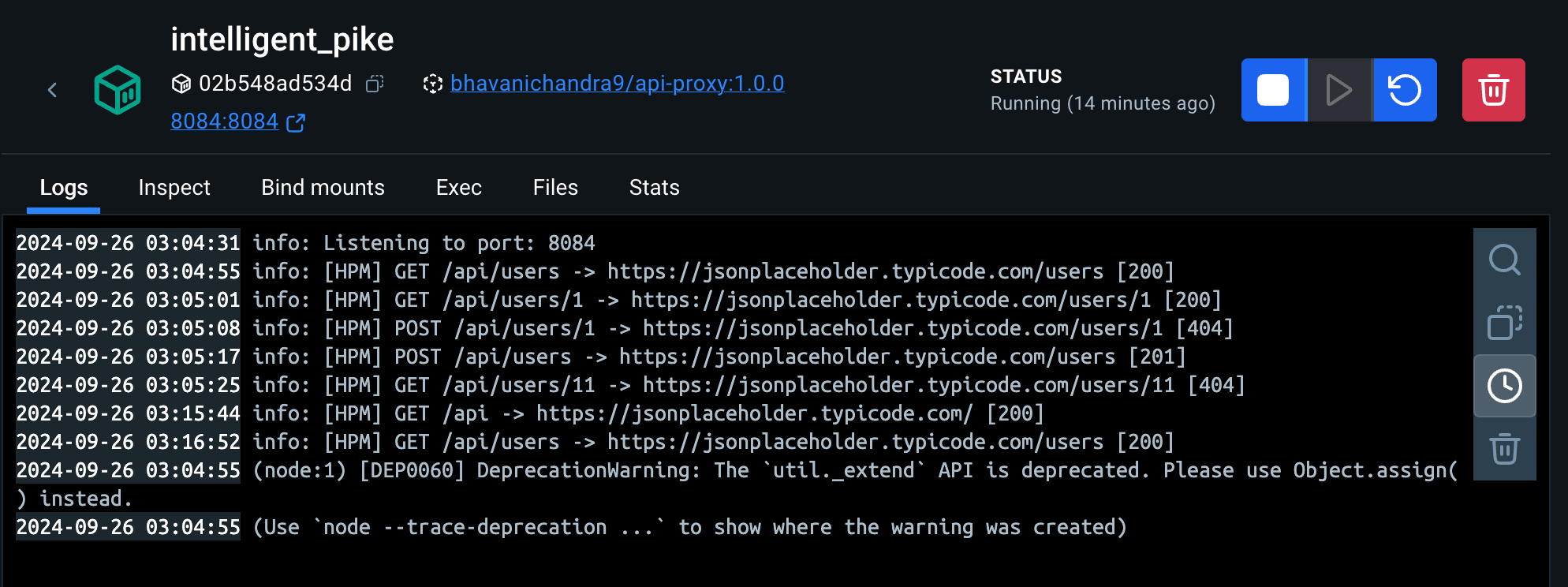Effortless Local Development with a Proxy Service
 Bhavani Chandra Vajapeyayajula
Bhavani Chandra VajapeyayajulaIntroduction
Today, I tried to use an API that I don't have access to, and when I tested it in my Angular app, I got a CORS error. I wondered what to do next. Since I don't have access to the API, the only option is to ask the developer to add localhost:4200 to the allowed list.
I searched online for a solution, then I remembered that I can make calls to the API from Postman. So, I decided to create a proxy service to pass through the calls from my Angular app to the actual API. This proxy is only used for local development, so there's no need to worry much about security aspects.
This blog shows a simple pass-through service which accepts UI requests and in turn call the target API to get the result back to the UI.
Implementation
To implement this proxy service, there are few prerequisites:
Node and Express
http-proxy-middlewareExpress MiddlewareDockerfile → Which I can use to run the proxy service locally within minutes
The below image shows a simple snippet of the proxy service using http-proxy-middleware library.
app.use('/api', createProxyMiddleware({
target: process.env.API_TARGET_URL,
changeOrigin: true,
logger: logger,
secure: false,
pathRewrite: {
'^/api': ''
}
}))
There are two main things from above image
Target URL: The URL to which the API calls will be passed through
Path Rewrite: Rewrite the
/apito empty and pass the rest as usual.
I’m using watson library is used for logging, the log is verbose, and has all the required information.
Dockerfile
FROM node:22-alpine3.20
ARG API_TARGET_URL
ARG API_PORT=8083
ENV API_TARGET_URL=${API_TARGET_URL}
ENV API_PORT=${API_PORT}
WORKDIR /usr/src/app
COPY package*.json ./
RUN npm install
COPY ./src/ .
EXPOSE ${API_PORT}
CMD [ "node", "app.js" ]
This Dockerfile creates the api-proxy image and takes two build arguments:
API_TARGET_URL: The API URL you want to use as the target. This is base url of your API
API_PORT: The port on which to run this
api-proxyon.
Usage:
To use this proxy service, you can pull the Docker image using this command:
docker pull bhavanichandra9/api-proxy
To run the service, use the following command:
docker run -e API_PORT='8084' -e API_TARGET_URL='https://jsonplaceholder.typicode.com' -p 8084:8084 bhavanichandra9/api-proxy:1.0.0
Another way to use this is to clone the GitHub repository, build the image, and use it as shown below:
You can check out this project on GitHub at this link: https://github.com/bhavanichandra/api-proxy
Clone the repository and configure your Docker. Use the following command to build the image:
docker build --build-arg API_TARGET_URL=https://jsonplaceholder.typicode.com --build-arg API_PORT=9093 -t api-local-proxy .
This will create a Docker image. Use the docker run command to expose the port used during the image build.
Usage Example:
To demonstrate this proxy service, I used it with a simple test API from jsonplaceholder.typicode.com. This placeholder API has endpoints for users, posts, and more. Visit https://jsonplaceholder.typicode.com for more details.
I have used the docker image published to the docker hub and tried running the below command
docker run -e API_PORT='8084' -e API_TARGET_URL='https://jsonplaceholder.typicode.com' -p 8084:8084 bhavanichandra9/api-proxy:1.0.0
I exposed port 8084 in the container and forwarded it to port 8084 on my local system. This allows me to access APIs from https://jsonplaceholder.typicode.com at http://localhost:8084/api.
Using Postman or curl, I can get responses from the jsonplaceholder API.
curl --location 'http://localhost:8084/api/users'
The below are the logs from the docker container:

As you can see above, the path /api/users is rewritten to call the actual API with just /users.
Feel free to customize the api-proxy on GitHub.
Thanks for taking time to read the blog.
Subscribe to my newsletter
Read articles from Bhavani Chandra Vajapeyayajula directly inside your inbox. Subscribe to the newsletter, and don't miss out.
Written by

Bhavani Chandra Vajapeyayajula
Bhavani Chandra Vajapeyayajula
I work at GE Digital as a Full-Stack Development centered around design, R&D, and building great products and features that help businesses and consumers using best practices and design patterns. I'm a tech enthusiast and tech blogger. Furthermore, I mostly write blogs related to the technologies I've used.